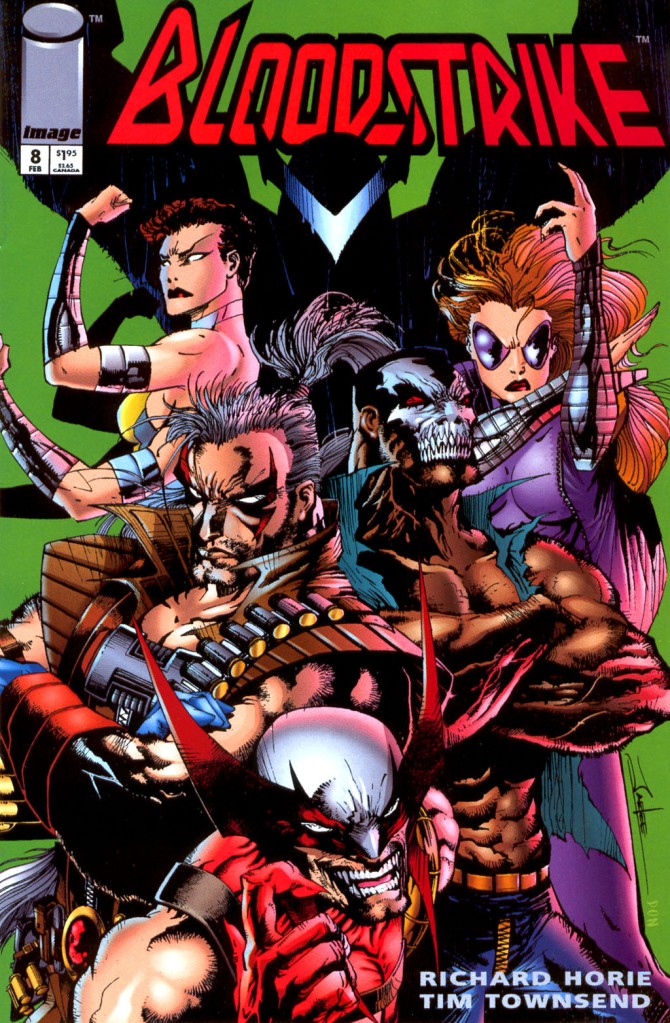MODERNISTS: A Bloodstrike Primer
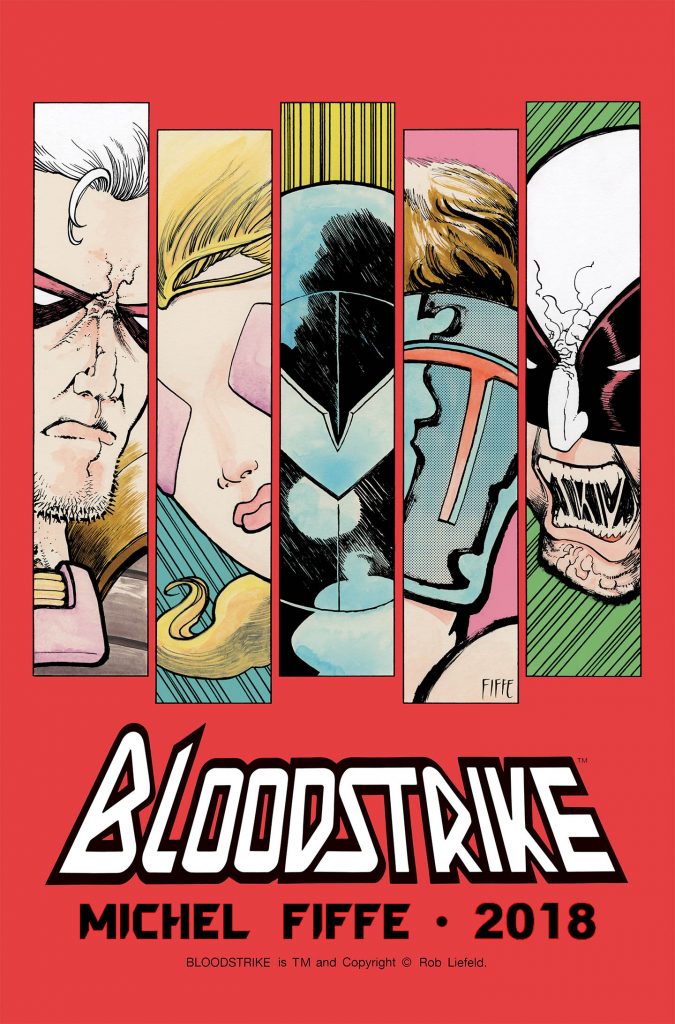
As I sit and write this, we are five days away from the release of Bloodstrike #0, the first part of the Bloodstrike: Brutalists project by comics creator Michel Fiffe. Fiffe, most famous for his self-published series Copra (which is distributed in collected form by Bergen Street Press), has created a three-issue revival of one of the least remarked-upon early Image Comics titles. In fact, I’d wager that a lot of people who follow Copra might not have ever read an issue of Bloodstrike in their lives up until now.
Good for you, then, that I read them all last night and now you don’t have to. Here’s what we here at Vox.com, the website you’re currently reading, like to call “Bloodstrike, explained.”
Rob Liefeld hardly needs an introduction or an explanation. His Youngblood was the first Image Comics title to hit the stands, and if you discount Wetworks not coming out at all for a few years, it was also the first Image title to run into what we’ll call “scheduling peccadilloes.” Youngblood was initially presented as two books in one: a government-run superhero team split into the “Home” team, who handled high-publicity missions and were presented to the public as celebrities, and the “Away” team, who handled missions that required just enough discretion to avoid international incidents.
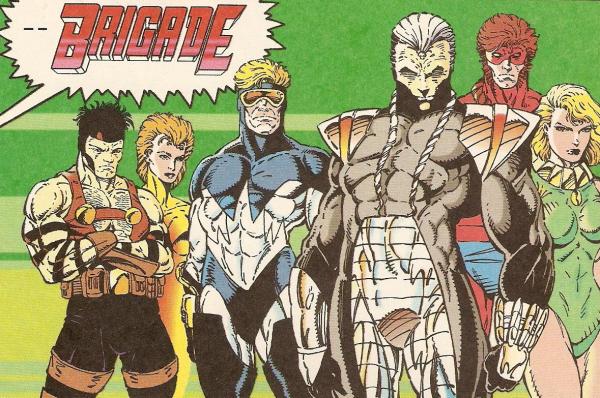
Two fully-populated superhero teams were not enough for Liefeld’s dreams, and less than a year after the release of Youngblood #1, he became the first Image creator to add a second title to his corner of the shared “Image Universe.” Brigade, another team, was led by a character called Battlestone, a former member of the Youngblood team who had been expelled from the group. The Brigade team functioned independently from the United States government, and at times fought against them. This is not as noteworthy as it seems, because in the Liefeld-verse, the United States government is a matryoshka doll of secret conspiracies and hyper-advanced weapons developers. Shut down one technocratic cult, and it turns out another one was behind the first one all along, and on and on.
The relationship between Youngblood and Brigade was unmistakably similar to the relationship between X-Men and X-Force. In 1992, X-Men was unquestionably the biggest comic franchise on the planet, and Liefeld had risen to superstardom by drawing the adventures of the X-Men’s student team in The New Mutants. He was then given creative input to relaunch The New Mutants as the paramilitary X-Force. Led by the enigmatic, Teminator-esque super-soldier Cable, X-Force shared a similar goal to the X-Men — lasting cultural peace between normal humans and super-powered mutants — but X-Force aimed to solve those problems through direct action and aggressive, violent intervention.
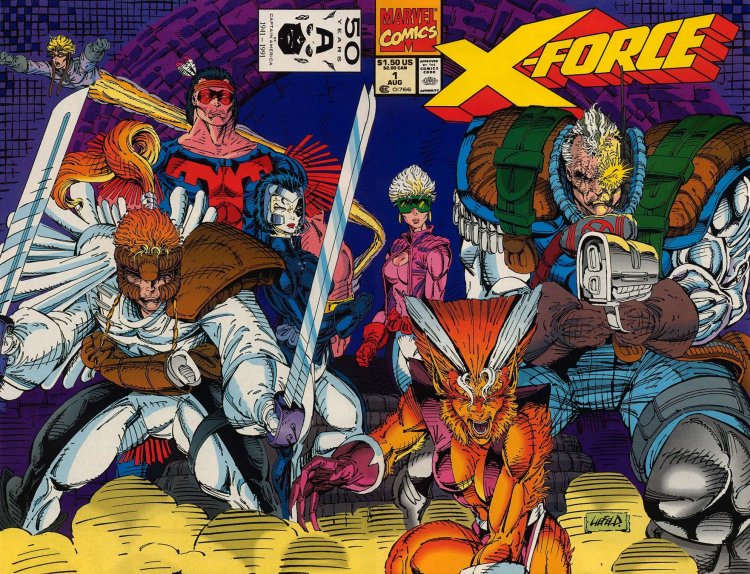
I realize that we’ve gone almost five hundred words without actually talking about Bloodstrike. Still, the above is necessary fundamentals for understanding what Bloodstrike was. The storytelling style of contemporary X-Men and X-Force comics (rampant cultivation of subplots, Big Themes scrunched into verbose dialogue during fight scenes, an emphasis on the relationships and tensions between team members) begat Youngblood, which in turn begat Brigade, which in turn begat Bloodstrike.
Bloodstrike, as a comic series, can be broken fairly cleanly into three parts. The first part is the initial story arc, which was a crossover with Brigade, and was penciled by Dan Fraga with a story plotted by Rob Liefeld (who is solely credited as the characters’ creator) and scripted by Eric Stephenson (who is currently the Publisher of Image Comics). The second part was mostly penciled by Chris Alexander, scripted by Stephenson, and plotted by comics legend Keith Giffen. The third part, which took up about half of the book’s lifespan, was mostly penciled by Karl Altstaetter, and collectively plotted by Alstaetter, Liefeld, and Robert Napton (who also scripted). Each of these sections is wildly different from one another, and reading the entire series in short order was a series of hairpin turns.
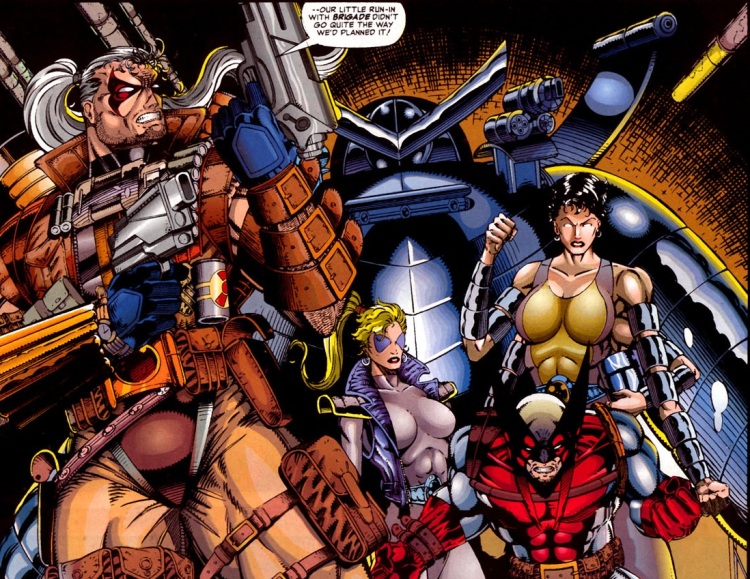
In the first issue of Bloodstrike, from 1993, we are introduced to the Bloodstrike team. These introductions are often cursory and off-handed, because one of the pervasive failings of early Image is that it treats even characters you’ve never seen before as if they’re media franchises the entire world has been following for ages. It’s like the “you’re probably wondering how I ended up in this situation…” meme, without actually flashing back to explain how they ended up in that situation.
What the astute reader can piece together from context clues is that the original Bloodstrike team consisted of Cabbot Stone (the leader, a super-soldier distinctly in the Cable mode, and one of many such characters in the Liefeld-verse), Tag (who could paralyze with a touch), Deadlock (a Wolverine/Sabretooth-esque), Shogun (an armored walking arsenal), and Fourplay (four arms). They have what can be conceded as sketches of personalities: Cabbot is grim and no-nonsense, Tag is flirtatious and cynical, Shogun has a creepy Lars and the Real Girl type relationship with his suit of armor, Deadlock is a psychotic asshole, and Fourplay is there. They get tactical info and teleportation assists from an AI, Roam, who is a 1:1 rip of Cable’s tactical/teleportation AI, Professor.
In the first issue, the villain shoots Cabbot directly between the eyes, which he gets up from with no ill effects. It is commented that he is a “dead man,” and it also seems to be the case that the team are mercenaries able to be hired. The mercenary aspect of the team is never mentioned again, because by #2, they are government agents. The Bloodstrike team works for Project: Born Again, a secret government initiative among many others. The Bloodstrike team are a literal “suicide squad” — if they die in battle, the technology of Project: Born Again can revive them. This is all discovered in the course of the “Blood Brothers” crossover with Brigade where, in a twist, it turns out that Cabbot is the brother of Battlestone, the leader of Brigade.

By Bloodstrike #4, the second part of the series is underway. With Keith Giffen plotting the book, an effort was made to do two things. First, the characters would be given actual personalities, and with that, subplots. Secondly, it would shoot for being maybe one of the most singularly unpleasant superhero books ever created. In interviews at the time, Giffen copped to as much. If the teens of 1993 wanted cool anti-heroes with guns who would blow away the bad guys or rip their guts out with katanas, then he would deliver to the point of absurdity. And he did!
Each issue of the brief “Giffen era” of Bloodstrike includes outrageous, gory violence that seems to be directly inspired by Mortal Kombat (which was a thing at the time, if you recall). In Giffen’s first issue, we see what the team gets up to in their off-time. Cabbot reviews files that seem to indicate that there are two Deadlocks. Shogun tinkers with his armor. Fourplay goes shopping and shoots a would-be robber with a pair of gatling guns. Deadlock, or one of the Deadlocks, stalks a young woman who he plans to kill, but when two street toughs (who appear closer to the “we are taking the armoire” guys from Seinfeld) rough the girl up first, he disembowels and decapitates them. Tag goes out and fakes being drunk to find a guy who wants to date rape her, and then she turns the tables and uses her paralytic powers to rape him.

This streak of ultra-cynical, nihilistic violence continues unabated: the team are sent to capture Supreme, the Liefeld-verse’s resident Zack Snyder Superman, but Supreme murders virtually the entire team in graphic on-panel executions. Behind the scenes, the team are being set up to fail by a “Mr. Noble,” who is actually a secret agent for the non-denominational religious fundamentalist terror cult, the Covenant of the Sword. As part of this, Chapel from Youngblood — one of the A-listers of the Liefeld-verse at the time, through his connection to the lore of Todd MacFarlane’s Spawn — is added to the team as their new leader.

None of this ever really goes anywhere. The “two Deadlocks” subplot is forgotten almost instantly. We check in on the guy who Tag raped in two later issues, where he seems to be suffering from some kind of decomposing disease from contact with her, but then that plotline is mercifully dropped, too. The team are revived just in time to participate in the Extreme Prejudice crossover between all of the titles in Liefeld’s stable, where the ultra-powerful bad guy Quantum is revealed to be Cabbot and Battlestone’s father, a fact that ends up not meaning much of anything in the long run. Mere issues after being slaughtered by Supreme, the team is slaughtered again by Quantum, with Cabbot sacrificing himself to stop his father.
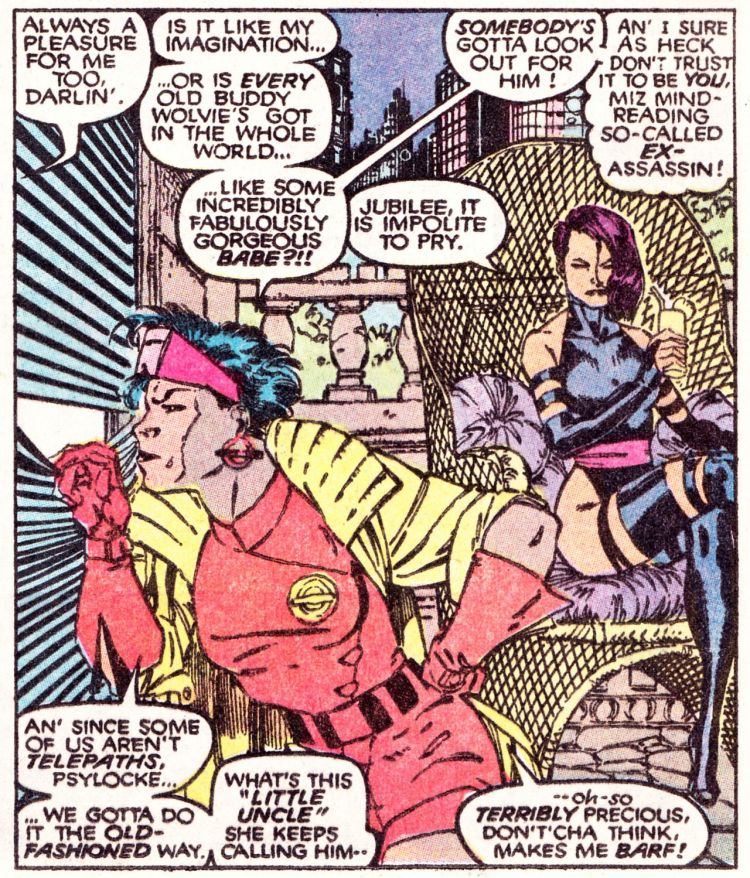
So much of what’s noteworthy about these comics is down to rote recitation of plot points, because that’s what these Bloodstrike comics are: rote recitation of plot points. The rise of X-Men to the top of the comics world was shepherded by Chris Claremont’s storytelling style, where the plot was something that happened in between the moments that defined characters and personalities. (You can see a very derivative, not-as-successful version of this in any given Brian Bendis team book from his tenure at Marvel.) Where Bloodstrike (and Brigade, and Youngblood) failed is that they mistook big, punchy action moments and dramatic shouts as character development in and of itself, rather than the payoffs to same. So everyone in these comics runs around, open-mouth screaming, firing guns everywhere and doing Bruce Lee kicks at each other, but none of it really means much of anything because there’s no gravitational center to hold any of it in place as it rotates. You can’t comment on the storytelling themes or the character portrayals because these comics weren’t designed to give you any of that. They were designed to give you cool drawings of katanas, arranged in the order dictated by whatever the plot of that issue was.
Or, as Ronnie Luchejko writes in the letters page of Bloodstrike #7: I just finished reading issue #5 and it was the bloodiest, most sadistic thing I’ve ever seen! I’m not saying I didn’t like it, but it was very gory! I know Supreme wasn’t on the best of terms with Bloodstrike, but MY GOD! Don’t you think Supreme could have shown a little bit of mercy? Bloodstrike is now my favorite title! I am anxiously awaiting future issues of Bloodstrike to find out what happens! Actually, the letters page is where the bulk of the “lore” is laid out in plain text, largely because many readers — when not praising the book’s approach to portraying people beating the shit out of each other until they die — wrote in with basic questions like “So is Shogun a reanimated corpse like the rest of the team?” that were left unclear by the storytelling in the comics themselves.
After the Extreme Prejudice crossover where the entire Bloodstrike team died, the title jumped ahead to #25. This was a flash-forward issue, part of a marketing gimmick called “Images of Tomorrow,” where titles would publish their #25 a year or more ahead of time and then go back and build toward that work, so that when read in order, #25 would slot in seamlessly. Bloodstrike was cancelled with #22. All the same, #25 introduced us to the new Bloodstrike: a single masked operative using the name, who was for some reason dispatched by someone (the government?) to murder a building full of space aliens.
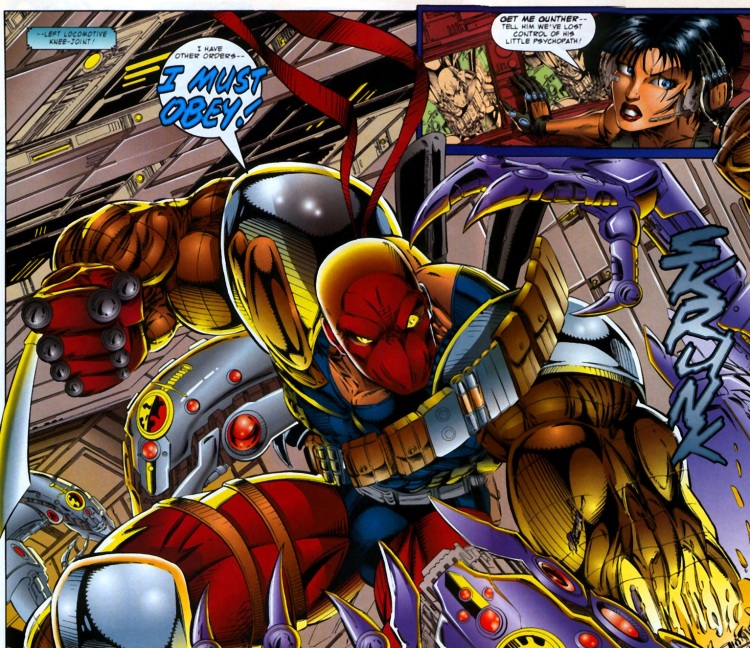
After the flash-forward, we snapped back to Bloodstrike #11, the beginning of the “Altstaetter era” mentioned above. In the first five pages of this issue, the “Mr. Noble, the head of Project: Born Again, is actually a spy from a religious cult” is resolved when everyone from Project: Born Again and the religious cult are summarily executed. This is undertaken by Mars Gunther, leader of the Purifiers, another secret government agency who essentially act as a black-ops clean-up squad, wiping problems off the map. Working under Mars are a sub-team called “the Experts,” consisting of the cyborg Tower, the tech expert Bailout, the tactician Athena, and the singular Bloodstrike who we met in the flash-forward issue.
The plotlines the book follows aren’t really very interesting. Bloodstrike and the Experts fight people, because people are there to be fought. There are crossovers with other Liefeld books, including the first version of Prophet — the one from before Simon Roy and, uh, you know, the other guy came along. More interesting are the ways that Karl Altstaetter and sometime fill-in artist John Stinsman capture the trends of the time, in a way that suggests literally no exposure to any kind of culture not presented in the pages of Wizard: The Guide to Comics. Bailout dresses like someone who gets all of their ideas about fashion from J. Scott Campbell’s Gen13. At one point, Bailout and Athena start dressing in tight-fitting zippered bodysuits because that was the moment when Ghost in the Shell and Masamune Shirow became popular. The experiment of “what happens when a comic book’s only influence is other comic books?” is borne out, and as it turns out, those comics are about as featureless as an uncooked chicken breast.
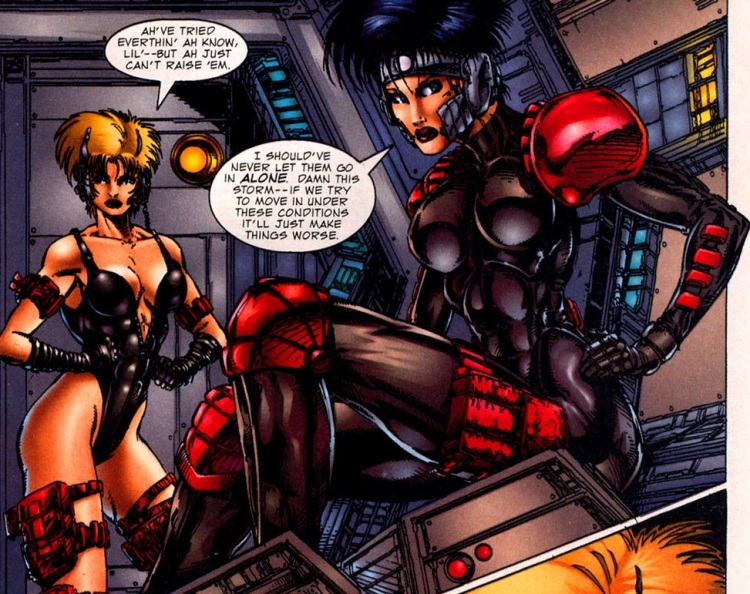
The solo Bloodstrike guy turns out to be an amnesiac Cabbot, to the shock of no one except some folks in the letters page. Mars Gunther revives the original Bloodstrike team for the final story arc, where the old team and the new team join forces to fight the evil bikini sorceress Epiphany, but they’re all either killed by her or spontaneously combust due to flawed resurrection science. Bloodstrike #22 ends with Cabbot saying goodbye to Athena, whom he began a relationship with more or less completely out of nowhere in #21, and going off to find who he really is. The end of the comic promises a storyline called “Loose Ends” in #23, #24, and #26, coming in fall 1995.
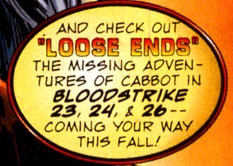
Of course, those were never published. Altstaetter drew a three-issue series called Bloodstrike: Assassin later that year that ended on an unresolved cliffhanger. Later, there was Cabbot: Bloodhunter, which was also unfinished. Later still, Tim Seeley revived Bloodstrike with #26 in 2012, and wrote the title through #33. (Seeley’s #26 did not resolve the cliffhanger from the #25 published almost twenty years earlier.) A planned #34, written and drawn by Liefeld, never materialized. And now, in 2018, Michel Fiffe will put out Bloodstrike: Brutalists, in the form of #0, #23, and #24, fitting a “lost tale” of sorts into the publishing gaps.
At the end of the day, Bloodstrike was not a very good comic, and often an actively bad one. By the time I had passed #20, there were scenes in the comic that made me question whether or not I actually could read or understand English. In the two years of its original publication, the only time the book showed any originality, inspiration, or flair was when Keith Giffen was feeling crabby about modern comics and decided to turn the entire team into a bunch of craven, murderous assholes, and then four issues later anything he brought to the table was swept off in favor of chasing the new, cool, hot trends of an industry that by 1995 had basically broken its own neck trying to self-suck.
In fact, the most utility that the first Bloodstrike series has is that of a time capsule. It shows a timeline, from 1993 to 1995, of what teenage boys and young adult men who read comic books thought was cool. X-Men. X-Force. Cable. Government conspiracies. Technocrats. Cyborgs. MTV. Mortal Kombat. The Punisher. Spawn. Crossovers. Katanas. Giant guns. Ultra-vascular biceps thicker than a foot locker. Baywatch-babe bodies. Kevin Smith. Joe Quesada. Joe Madureira. Masamune Shirow. Anime. Adam Warren. J. Scott Campbell. And so on, and so on, and so on…
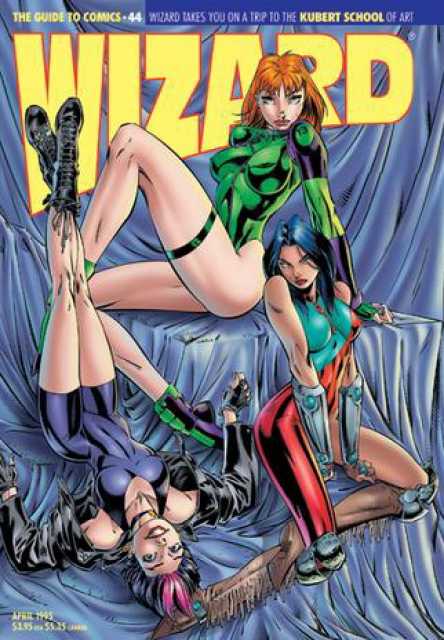
This aspect of Bloodstrike makes it an interesting fit into the established Michel Fiffe canon. Obviously, Bloodstrike: Brutalists is Fiffe playing in someone else’s sandbox, but the most consistently noted part of Fiffe’s run with Copra is that he’s been “playing with other people’s toys” all along. Copra started out as a riff on DC’s Suicide Squad — particularly the 1980s series by John Ostrander, Kim Yale, Luke McDonnell, et al. — and has since grown into a comic that doesn’t homage one specific source, but rather a broader storytelling style prevalent in 1980s comics. “Post-Crisis” storytelling might be a good word for it, but it sucks in influences from beyond just late-80s DC fare, namely Mark Gruenwald’s Captain America and Quasar, Chris Claremont’s X-Men, and Ann Nocenti’s Daredevil. (I’m committing a sin here by only specifying writers, I know, but Kieron Dwyer and Steve Ditko are probably not as much of an influence on Fiffe’s plotting as much they are on other aspects of his work.)
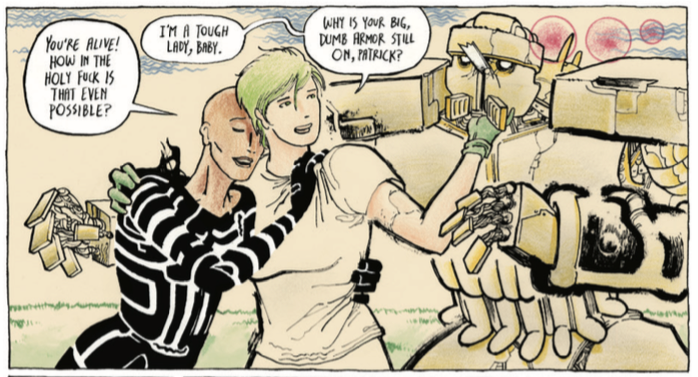
What Fiffe does in homaging a whole period of work for Copra is to stick his hand in there and go for the comic’s substance: what made it work under the hood, rather than just what looks coolest on the page. (He did the same thing with his brief Marvel run on All New Ultimates, which seemed to be more specifically drawn from late-80s Spider-Man and Cloak and Dagger comics.) That’s where Copra succeeds and Bloodstrike failed. Underneath the flashy drawings by Bloodstrike‘s would-be mega-stars, there was just nothing going on at all. In creating what is effectively a tribute series to Bloodstrike, Fiffe is homaging a series that was, in and of itself, a pastiche with no identity of its own, beyond a modern-day Twitter cult reputation for the issue where Supreme kills everyone.
So congratulations if you made it this far. We’re right about at the 3,000 word mark, and what I have to say to you should be no shock at all: You won’t need to read Bloodstrike to understand Fiffe’s Brutalists. That’s because if you read Bloodstrike, there’s nothing to understand. It was the 90s. You had to be there.
